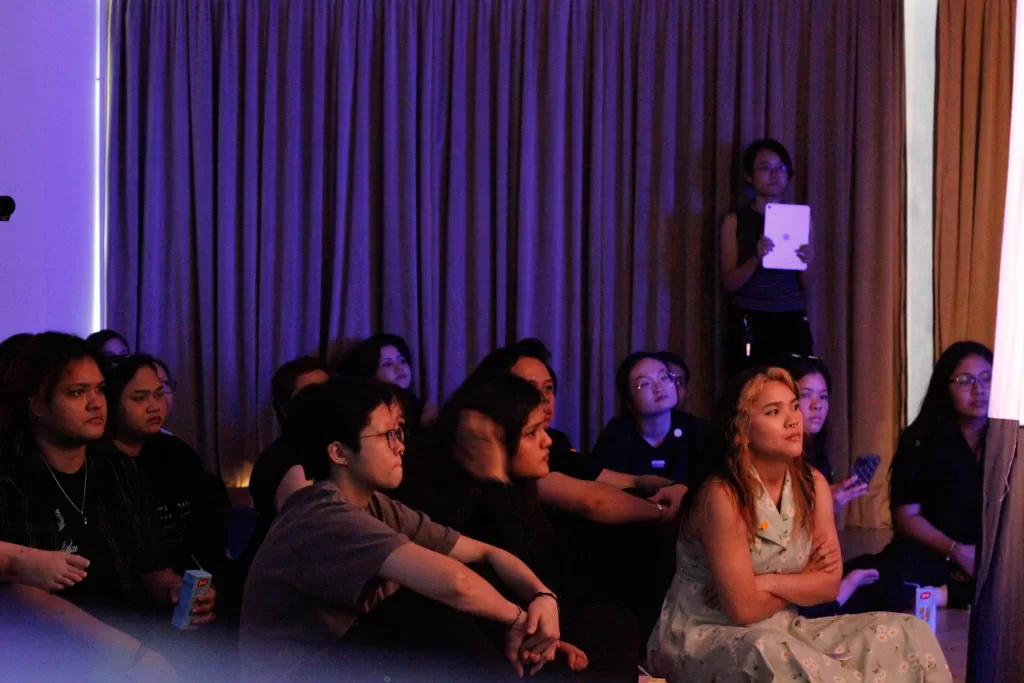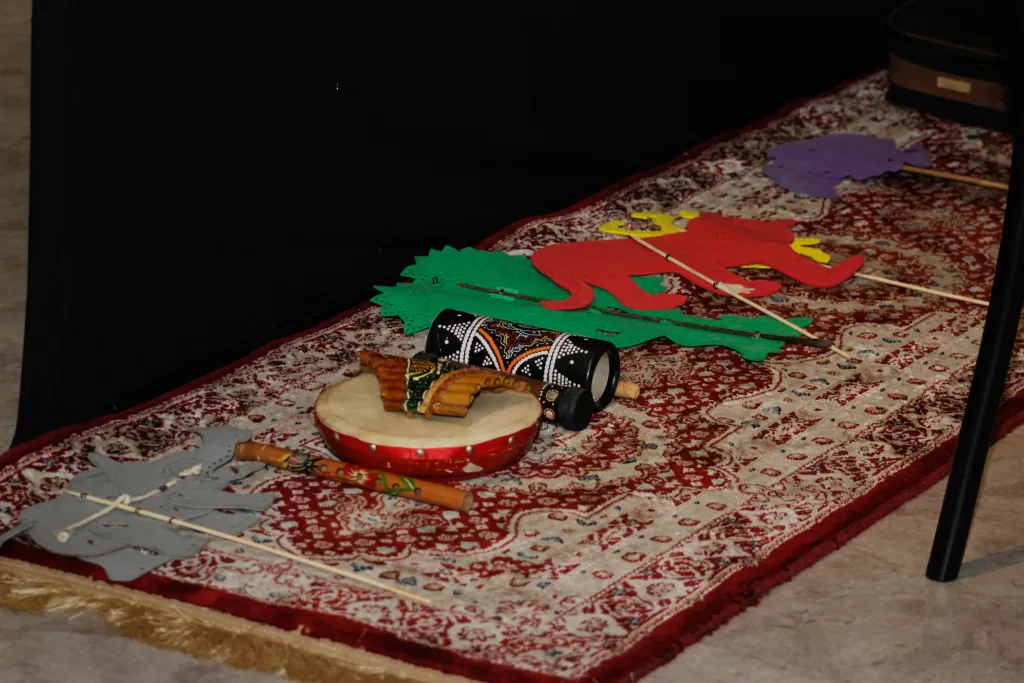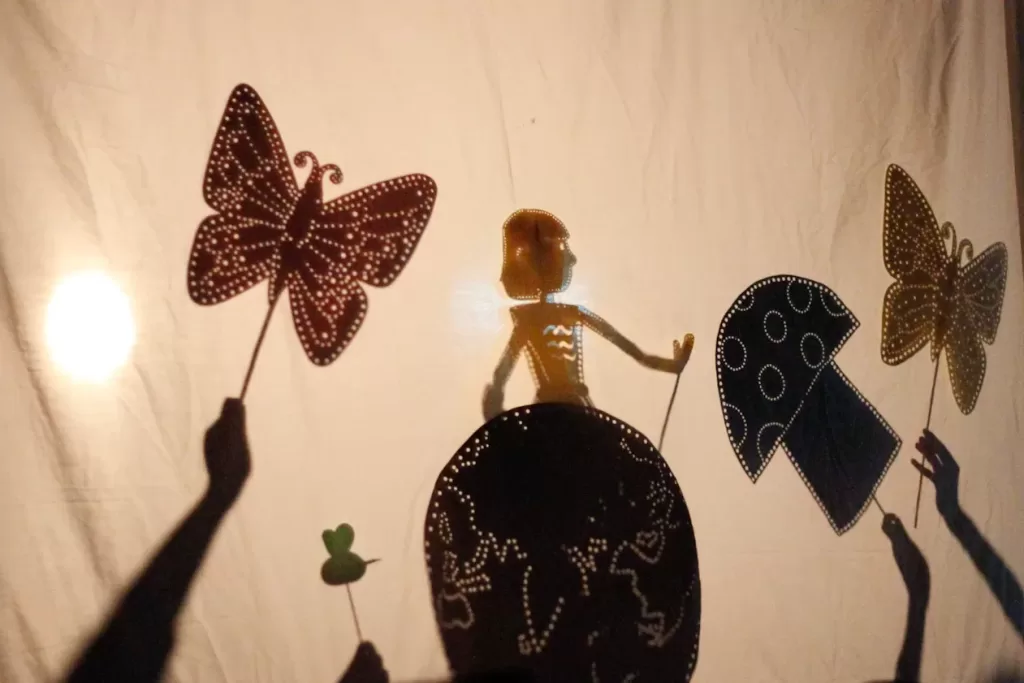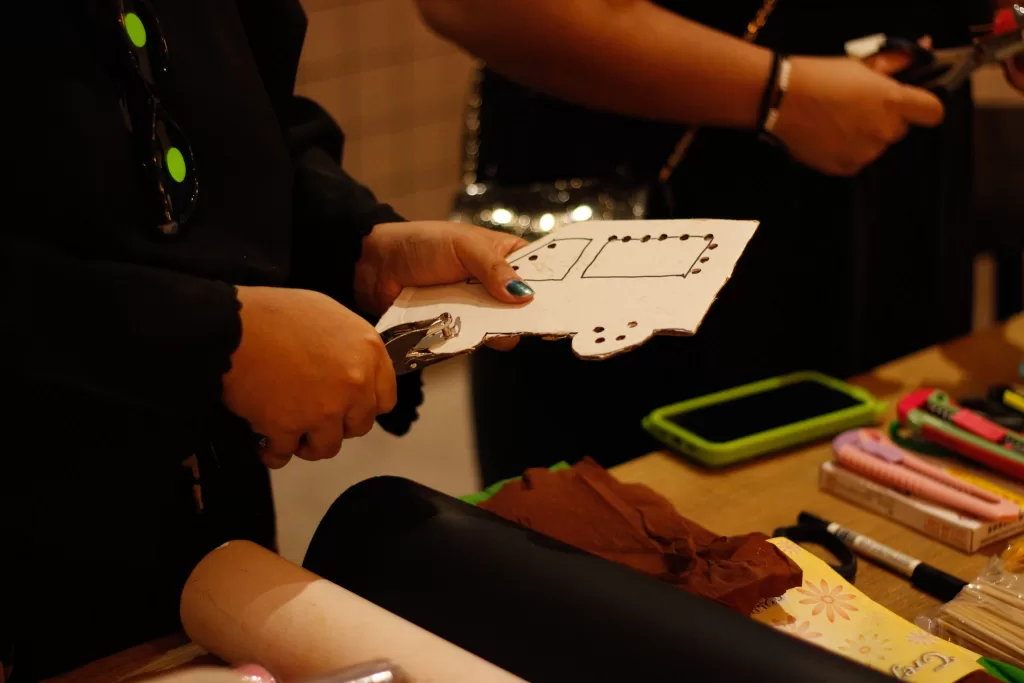A reflection on creative climate action, storytelling, and community
I arrived at the workshop venue, groggy and disoriented. It had been a long morning of community gardening under the relentless Malaysian sun, hotter due to the Selangor heatwave. I was still in gardening attire, a little sunburnt and in dire need of a nap.
My sleepy Grab ride to the workshop venue made it just in time. Before I could get lost finding the entrance, I was greeted warmly by two people near a doorway: “Are you here for the wayang kulit workshop?”
This was Yuespace, tucked quietly in Hartamas with its name in small lettering beside the entrance. With half-lidded eyes, I thanked the volunteer usherers and made my way to freshen myself up in the washroom, changed into clean clothes, and made it out right as the workshop began.
Heritage and Performance Art in Climate Action

Sitting in front of a projection screen were about 30 young people, keen to see what our hosts, Klima Action Malaysia (KAMY), had in store for us.
This youth-led feminist climate justice collective is one of the few local platforms that cross-over climate activism with community arts activities. In February, they hosted 50 people for a climate zine-making workshop, providing them the medium to archive their feelings and experiences around the climate crisis.
We met Kasih, our main facilitator from KAMY, and Jes Ebrahim, our young guest Tok Dalang (master puppeteer) from Tree Theatre Group, who led the workshop.
They introduced us to the history and the makings of a wayang kulit piece, along with how to work with upcycled materials, which is where the ‘buangan’ in the title comes in.
But what they shared wasn’t just about technique or heritage.
We discovered how shadow play has always been a tool for social reflection, and how it can help us communicate difficult truths–like our current climate crisis– through emotion, imagination, and creativity.

As they prepared the space for their performance-demo, the grogginess I arrived with had dissipated, replaced with intrigue and excitement.
Behind a white sheet, the sole light source in our dark room resembled the Sun. The soothing strum of an acoustic guitar and soft percussion filled the room as shadow characters began to rise into visibility.
Jes’s version of a Tok Dalang’s storyteller role was a melancholic voice singing about the beauty and interconnectedness of our planet’s rich biodiversity. The piece reminded us of the magnitude of loss we would face if we do not collectively do more to protect it.
The rest of the session was then spent in groupings of five, brainstorming a 3-minute performance and crafting our puppets.
My group ended up producing a mash-up between Finding Nemo and Little Mermaid, with a somewhat bleak narrative around plastic pollution and migration. Despite our serious topic, us youth being youth, it was impossible to do our little show without some mistakes and plenty of giggling.
Like most performance art, it would take quite some practice and fine-tuning to be able to understand how the shadow puppet behaves as viewed by the audience, as what the performer does behind the screen is not what they will actually see. And I am by no means a natural performer, but in the easygoing and light atmosphere that KAMY provided, I was glad that we were able to have fun with it.

More than an Art Workshop
Beyond the entertainment that the evening provided, what stood out most to me was the intentionality behind the workshop. It wasn’t just an art session, but a platform for climate storytelling, community expression, and collective reflection.
Workshops like these create space for people to process, communicate and archive what’s happening around us.
This is especially because the seriousness of climate change requires more than just data and graphs to communicate the destruction, loss, change, and hopelessness it can ignite.
And this is where creative involvement and artistic practice is a great way to convey the emotional magnitude of that reality.

From Craft to Message: Making Puppets with Purpose

If you are interested in creating your very own wayang kulit puppets, here are some tips from the workshop on the kinds of upcycled materials and tools you can work with!
- Cardboard: repurposed from packaging, sturdy and versatile.
- Craft paper: flexible and accessible; one of our group members cut it into a mesh resembling a fishing net.
- Clear plastic sheets: great for line details and illustration.
- Foam sheets: light and flexible for movable parts.
- Coloured transparent plastic (like from file folders): used to add mood or tone e.g. red for danger, blue for calm.
- Hole puncher: to punch holes along the puppet’s perimeters, evoking a traditional element from intricately cut shadow puppets, as well as creating a clearer and eye-catching silhouette.
- Paper fasteners: for attaching the puppets to the base sticks (e.g. wooden skewers) and adding moving limbs, jaws and wings – giving life to the characters.

All photo credits to @byints and video credits to Klima Action Malaysia (KAMY).


Leave a Reply